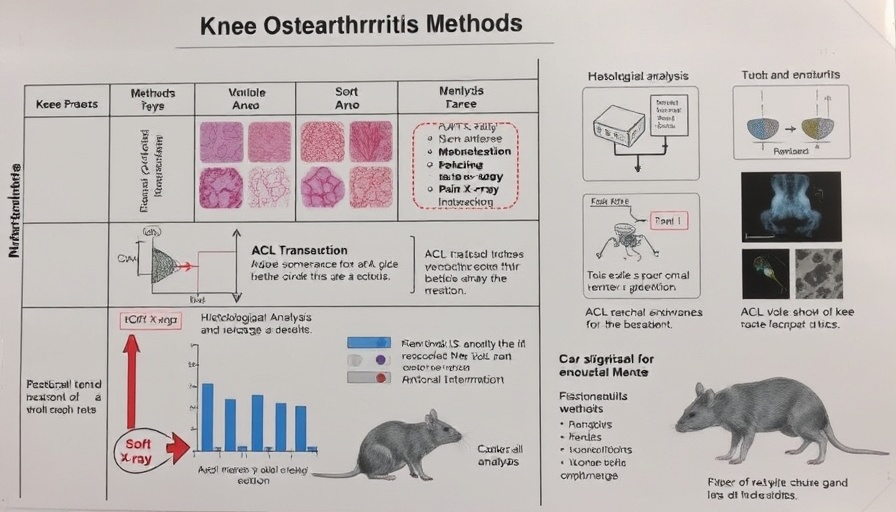
The Connection Between Joint Instability and Pain Management
Knee osteoarthritis affects millions, often through joint instability that exacerbates pain and inflammation. Recent findings have illuminated how controlling joint instability can lead to significant pain reduction in early-stage sufferers. This revelation is paramount for patients looking for effective ways to manage their discomfort and enhance their mobility.
Understanding Osteoarthritis: A Multidimensional Challenge
Osteoarthritis is more than just wear and tear; it's a complex interplay of biological and biomechanical factors. The early stages of knee osteoarthritis often manifest as joint instability, which creates a vicious cycle of pain and inflammation. This connection is not widely recognized yet, offering a crucial perspective for both patients and healthcare providers in managing early signs of the disease, particularly in an age where lifestyle factors are increasingly deemed responsible for joint health.
Recent Research Boosts Treatment Options
Recent studies have focused on optimizing treatment pathways, suggesting that targeted therapies that focus on stabilizing the joint can mitigate inflammatory responses. Patients who engage in targeted physical therapy or utilize supportive devices may find a noticeable decrease in their pain levels. Understanding these pathways allows for more personalized treatment strategies that rely less on pharmacological interventions, which can have side effects and varying efficacy among individuals.
Actionable Insights for Patients
For those grappling with early knee osteoarthritis, understanding the role of joint stability can be empowering. Here are practical tips for managing symptoms:
- Physical Therapy: Engage in tailored physical therapy that focuses on strengthening the muscles around the knee.
- Adaptive Equipment: Consider using braces or supports that can help stabilize the joint during activities.
- Activity Modification: Adjust your daily activities to reduce strain on the knees, opting for low-impact exercises like swimming or cycling.
Implementing these strategies can help patients manage their symptoms more effectively and possibly slow the progression of the disease.
Looking Ahead: Future Perspectives on Knee Health
The understanding of knee osteoarthritis and joint health continues to evolve. With technological advancements such as telehealth and artificial intelligence-driven diagnostics, future treatments may become even more personalized. Understanding the intricate details of how joint stability impacts pain opens the door for innovative solutions, fostering a more hopeful outlook for those affected.
Conclusion: A Call for Awareness
While there is ongoing research into the mechanics of osteoarthritis, it is vital for patients to be advocates for their health by exploring options for joint stability control. Improved awareness not only benefits individual patients but also informs broader healthcare perspectives. Patients should work collaboratively with healthcare providers to explore these new avenues for treatment.
As technological advancements continue to penetrate health sectors, staying informed will be essential for effective self-management and ensuring that innovative therapies reach those who need them most.
 Add Row
Add Row  Add
Add 




 Add Row
Add Row  Add
Add 








Write A Comment